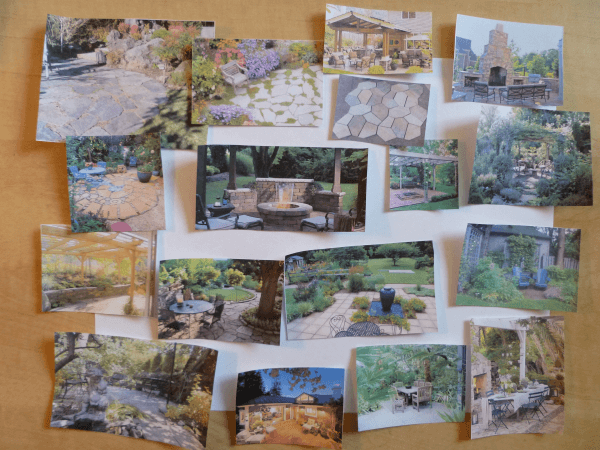How to Create a Storyboard for Your Landscape Project
Organization is key to turning ideas into a tangible vision. You can gather inspiration to help you craft a coherent story.
Every design begins with a vision.
When ideas come up against budget and development issues, the design process can feel overwhelming. It is crucial to create the vision without obscuring it with questions such as…
- “Gee, how can I build that?”
- “OMG, how much will this cost?”
It is like trying to decide how to build a project without having laid out the details. There are no ingredients that you need to buy or put together in the kitchen.
It is impossible to budget without some level or design. It is impossible to price.
Avoiding the design process is a sure way to make a mistake or end up with poor construction.
We will use the real project I have been dreaming of. After my home renovation is completed, I now need a patio. Even though I have an idea, I still need to see the whole picture.
Step 1 – Create a loose storyboard
This example shows you what I like and what I am drawn too. It also illustrates my aesthetic preferences – an important first step in designing. Browse magazines and the web to find images that appeal to you. Do not organize your images yet. Just clip and print until there are 12-18 images. Don’t judge or analyze what you have chosen. Follow your instincts and attraction in this step.
Step 2 – List your NEEDS, WISHES and WANTS.
NECESSITIES – Items that you are absolutely necessary now. This is a non-negotiable and must be agreed upon by all financial decision-makers. It is common to feel a sense of urgency when it comes to needs.
WANTS – These features are not being discussed by decision makers. However, they would be open to considering other options and would wait for the phase in before deciding. There are differences of opinion on materials, timing and location. These features often trigger strong emotional longings.
WISHES – This category is reserved for items that are too costly, too delicate, or difficult to integrate. The value of items in this category may be disputed by decision makers. These are the items that make you happy, even though you know they have some frivolity.
Step three: Organize your images in a way that responds to the wants, needs, and wishes you identified in step 2.
My patio must be large enough to accommodate a table for 6-8 people, a grill, fire, or water feature.
These images were taken from my inspiration collection. Although there are still many variations in the materials used, you will see that each image has a similar “feel”. It is cozy, intimate, and almost gardeny.
For my patio inspiration, I chose to concentrate on a few fun random patterns. More research is needed in this area. Perhaps a visit to a stone yard for a tactile experience with stone.

